Place Your Bets: Mercedes Suggests Level 4 Automated Driving By 2030

Remember a few years ago when just about every automaker was promising that self-driving would become publicly available by 2020? Well, they’re hoping you didn’t because a few of them are starting to issue new claims that vehicular autonomy is once again less than a decade away.
While “hands-free” driving systems that require you to remain constantly vigilant (in case you need to take over) have become the new hotness, Mercedes-Benz said it’s planning on selling a version that will qualify as truly self-driving by 2030. But there are caveats to that claim pertaining to specific traffic conditions – meaning it’s still not actually going to be SAE Level 5.
Considering just how far the industry has fallen short of its preexisting self-driving targets, this probably shouldn’t be all that surprising. Plenty of automakers have walked back (or completely ignored) their previous targets while others are starting to get in trouble for marketing Level 2 systems as fully self-driving. But that hasn’t resulted in every manufacturer abandoning their development programs.
According to Automotive News, Mercedes held a press event in Sunnyvale, California, last week where leadership announced plans to launch a rather sophisticated-sounding version of Level 4 technology that would effectively let the driver tune out completely while the vehicle pilots itself. However, the system wouldn’t work in all traffic environments.
From Automotive News:
Mercedes' Level 3 Drive Pilot system, self-certified for use only in Nevada for now, uses radar, lidar and other sensors to enable a vehicle to control driving functions on highways at speeds of up to 40 mph, freeing the driver to do other things, such as answer emails. Level 3 on the SAE International scale requires a human to take control of the vehicle when the automated driving system requests.
Mercedes Chief Technology Officer Markus Schäfer said achieving the more advanced Level 4 driving is "doable" by the end of the decade.
"Private-owned Level 4 cars, absolutely. This is something that I see in the future," Schäfer said at a media event here last week.
Schäfer explained that he believes there’s a strong need for hands-free, eyes-free driving in congested urban environments – especially in China, where the brand moves a lot of product and prolonged traffic jams are relatively common.
"Just imagine you are in a big city, and you come from work, and you are sitting for two hours in traffic, and you press the button and go to sleep," he said. "There will be a demand for that."
There’s always been demand for that and we’ve gone through several generations of people fantasizing about vehicles capable of offering such an experience. But the technology has been a long time coming, with American automakers offering their first self-driving concepts in 1939 – though the premise of radio-controlled cars actually dates back to the 1920s. The only real difference between then and now is that the relevant technologies have finally reached a point where the automotive sector can actually implement some of them.
Whether or not you’re impressed with the results, things like automatic emergency braking and lane keeping are becoming commonplace. We’re even seeing companies furnish limited-use systems where you don’t technically have to touch the vehicle’s controls to keep it moving through traffic. But these systems are highly contingent on road conditions and still require the driver to remain ever vigilant in case the technology falters and tries to steer you off a bridge.
Mercedes’ Level 4 system would change all that by making it so the driver could let their guard down. But, unlike SAE Level 5, the system will still be limited by geographical boundaries, weather restrictions, and internet connectivity. This is also true of SAE Level 3, with the manufacturer trying to push the technology as far as it can in anticipation of a major breakthrough.
Last year, Mercedes and supplier Robert Bosch were granted approval to test a fully automated valet parking system for use in a Stuttgart Airport garage, allowing cars to drive to pilot themselves into reserved parking spots. But the software is dependent on having unimpeded communication with sensors in the parking area to help them avoid obstacles.
Originally, companies were interested in building autonomous vehicles that could operate independently of the broader network. However, suppliers realized that it was probably easier to leverage connectivity to increase the amount of useful data self-driving cars could take advantage of – with the added benefit of the scheme creating more individual products and prospective clients. This is especially advantageous if you happen to be the company that just developed the latest hardware or software that everyone else wants to buy.
"We want to create a technology package [containing] everything a car needs to become a self-driving vehicle: sensors, cloud-based data processing and other components," said Michael Hafner, a Mercedes software executive who previously was head of Drive Technologies and Automated Driving at the automaker. "We will offer this package to other OEMs as well."
Mercedes is hardly alone in its desires, however. Most major automakers currently offer some form of hands-free driving on top-tier models and several brands are starting to introduce Level 3 systems designed to offer periods where you don't even need driver supervision until prompted by the vehicle. Unfortunately, what actually qualifies as SAE Levels 3 and 4 has gotten muddled while divergent regional regulations prohibited what automakers can actually implement between certain markets. For example, the BMW 7 Series is supposed to get a Level 3 self-driving system later this year. But it has no plans on fielding it in the United States until it feels more comfortable with the technology and assumed updates to U.S. vehicle requirements.
Regardless of when a company manages to deliver next-generation tech, they’re all operating under the assumption that vehicle connectivity will work in tandem with self-driving systems to create recurring revenue streams. By creating conditions where drivers don’t actually have to drive, they can sell all manner of distractions and advertise via tablet-like infotainment centers. They’ll also be able to sell the data accrued through interactions while simultaneously offering the latest advanced driving features through over-the-air updates.
Mercedes-Benz sales head Britta Seeger said she believes automated and advanced driving systems would become the "largest software-enabled revenue driver by 2030."
The automaker estimates said revenue would grow from "low single-digit" billion euros mid-decade to "mid-single-digit" billion euros by the end of the decade.
However, we’ve been down this road before. Automakers had vowed that electric vehicles would reach full parity (sales, pricing, range, performance, etc.) with combustion vehicles by 2025 and previously suggested that autonomous driving would be made publicly available by 2020. Neither of those assumptions turned out to be correct. Despite impressive sales and technological growth, EVs remain a niche segment of the U.S. market. Assertions made about autonomous vehicles have fallen even shorter of reality, which should probably encourage everyone to maintain a healthy level of skepticism when any automaker says self-driving vehicles are forthcoming.
[Image: emirhankaramuk/Shutterstock.com]
Become a TTAC insider. Get the latest news, features, TTAC takes, and everything else that gets to the truth about cars first by subscribing to our newsletter.

A staunch consumer advocate tracking industry trends and regulation. Before joining TTAC, Matt spent a decade working for marketing and research firms based in NYC. Clients included several of the world’s largest automakers, global tire brands, and aftermarket part suppliers. Dissatisfied with the corporate world and resentful of having to wear suits everyday, he pivoted to writing about cars. Since then, that man has become an ardent supporter of the right-to-repair movement, been interviewed on the auto industry by national radio broadcasts, driven more rental cars than anyone ever should, participated in amateur rallying events, and received the requisite minimum training as sanctioned by the SCCA. Handy with a wrench, Matt grew up surrounded by Detroit auto workers and managed to get a pizza delivery job before he was legally eligible. He later found himself driving box trucks through Manhattan, guaranteeing future sympathy for actual truckers. He continues to conduct research pertaining to the automotive sector as an independent contractor and has since moved back to his native Michigan, closer to where the cars are born. A contrarian, Matt claims to prefer understeer — stating that front and all-wheel drive vehicles cater best to his driving style.
More by Matt Posky
Latest Car Reviews
Read moreLatest Product Reviews
Read moreRecent Comments
- Probert They already have hybrids, but these won't ever be them as they are built on the modular E-GMP skateboard.
- Justin You guys still looking for that sportbak? I just saw one on the Facebook marketplace in Arizona
- 28-Cars-Later I cannot remember what happens now, but there are whiteblocks in this period which develop a "tick" like sound which indicates they are toast (maybe head gasket?). Ten or so years ago I looked at an '03 or '04 S60 (I forget why) and I brought my Volvo indy along to tell me if it was worth my time - it ticked and that's when I learned this. This XC90 is probably worth about $300 as it sits, not kidding, and it will cost you conservatively $2500 for an engine swap (all the ones I see on car-part.com have north of 130K miles starting at $1,100 and that's not including freight to a shop, shop labor, other internals to do such as timing belt while engine out etc).
- 28-Cars-Later Ford reported it lost $132,000 for each of its 10,000 electric vehicles sold in the first quarter of 2024, according to CNN. The sales were down 20 percent from the first quarter of 2023 and would “drag down earnings for the company overall.”The losses include “hundreds of millions being spent on research and development of the next generation of EVs for Ford. Those investments are years away from paying off.” [if they ever are recouped] Ford is the only major carmaker breaking out EV numbers by themselves. But other marques likely suffer similar losses. https://www.zerohedge.com/political/fords-120000-loss-vehicle-shows-california-ev-goals-are-impossible Given these facts, how did Tesla ever produce anything in volume let alone profit?
- AZFelix Let's forego all of this dilly-dallying with autonomous cars and cut right to the chase and the only real solution.



















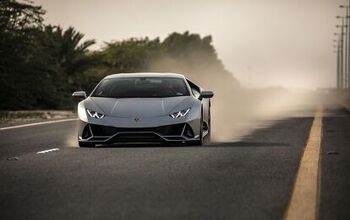
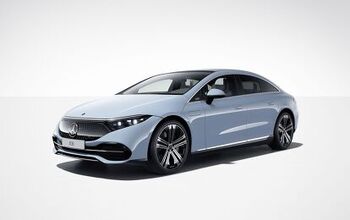

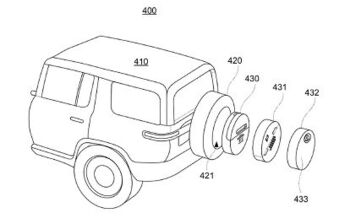
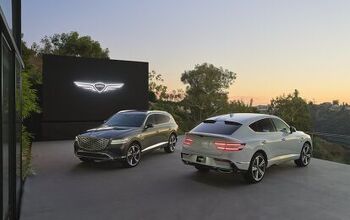
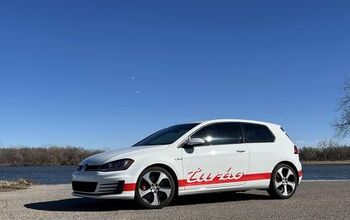

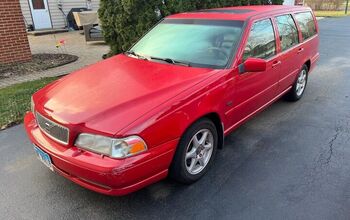
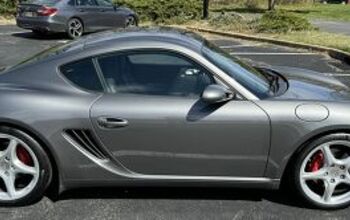

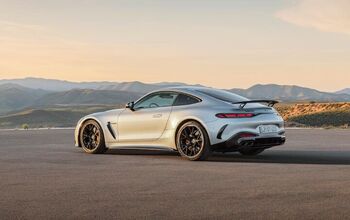
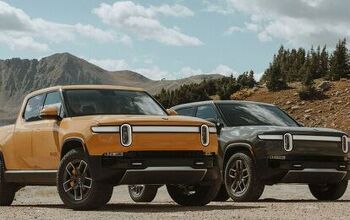
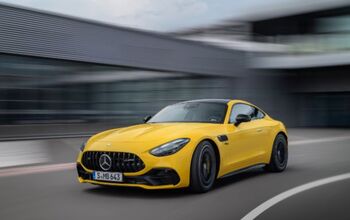
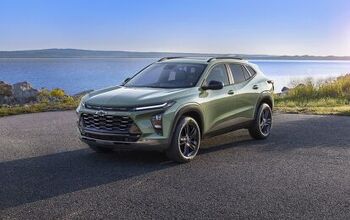
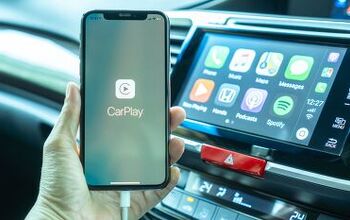
Comments
Join the conversation
We were promised human moon bases by year 2001.
"Just imagine you are in a big city, and you come from work, and you are sitting for two hours in traffic, and you press the button and create an ONLYFANS video," Fixed for the US market.